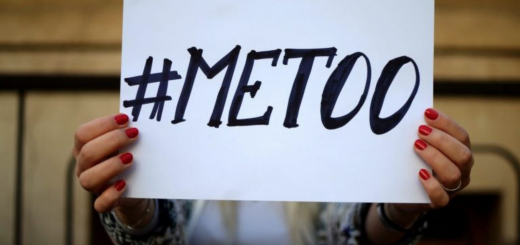Assessing Credibility of Survivors: The ONCA Debunking Rape Myths and Stereotypes in R v Steele
Warning: The following post by necessity includes details about an allegation of sexual violence and offensive language. It may not be suitable for all audiences.
Are rape myths and stereotypes still perpetuated by courts? What are the implications of this for survivors of sexual assault? Although the ONCA in R v Steele, 2021 ONCA 186 [ONCA] debunked the usage of rape myths in credibility assessments, the trial judge’s initial decision demonstrates that rape myths and stereotypical reasoning are unfortunately still being used by courts today.
Factual Overview
The respondent, Thomas Steele [“Steele”], lived in Bracebridge, Ontario and his parents resided in Britt, Ontario (ONCA, para 5). While visiting his parents, Steele asked his mother about meeting people his age in Britt and his mother told Steele about the complainant (ONCA, para 5). Steele added the complainant on Facebook, exchanging messages with her and making plans to meet in person in Britt (ONCA, para 5).
Steele and the complainant met for the first time at a school yard, and met again the next day to swim at the local docks alongside a female friend of the complainant (ONCA, para 6). While at the local docks, both Steele and the complainant consumed alcohol (ONCA, para 6). They then went to visit the complainant’s parents at her home, and they continued to consume alcohol while there (ONCA, para 6). The complainant offered to walk Steele halfway home–both Steele and the complainant were noticeably intoxicated at this time (ONCA, para 6).
The complainant testified that during the walk, Steele tried to kiss her without her consent, and she pushed him away (ONCA, para 8). She also testified that they also passed by an abandoned trailer on their walk, and Steele suggested that they go inside (ONCA, para 8). While inside, the complainant stated that Steele tried to kiss her again, but she declined and told him she wanted to go home (ONCA, para 8). She further testified that Steele then “kissed her, came up behind her, grabbed both of her wrists and held them while pulling her shorts down” prior to raping her “while she repeatedly asked him to stop and insisted that she wanted to go home” (ONCA, para 8). She indicated that Steele was much bigger than she was, and she could not get away from him (ONCA, para 8). The complainant additionally stated that Steele “called her a “bitch”, ordered her to “shut up”, and told her that he could provide for her and buy a house for her (ONCA, para 8).
Steele alternatively claimed that during the walk, he and the complainant shared a kiss, and that the complainant “did not resist or push him away” (ONCA, para 9). He further stated that it was the complainant who suggested that they go inside the trailer, while Steele was reluctant to do so since it was someone else’s property (ONCA, para 9). According to Steele, he and the complainant kissed more and once they were inside the trailer the complainant took off her clothes and they engaged in “vaginal and anal intercourse for about 30-40 minutes” (ONCA, para 9). Steele claimed that they hugged goodbye prior to parting ways (ONCA, para 9).
During this time, the complainant’s parents had called her multiple times as she was taking too long and it was getting dark (ONCA, paras 10-11). The complainant eventually responded to her father telling him that she was “at the legion” and would be home soon (ONCA, para 10). The complainant’s mother testified that the complainant arrived home much later than she would have had she been at the legion (ONCA, para 10).
Steele was 23 years old at time of the alleged assault, while the complainant was 18 years of age (ONCA, para 2).
Trial Judge’s Credibility Assessment
The trial judge, EJ Koke J, concluded that Steele and the complainant were both credible, but he found two issues with the complainant’s testimony that he believed raised questions about her credibility.
Firstly, the trial judge believed that the complainant could not provide a reason or explanation for her decision to enter the abandoned trailer (R v Steele, 2019 ONSC 3207, para 66) [ONSC]. EJ Koke J stated that the complainant could not have been motivated by curiosity to enter the trailer as she had previously been inside the trailer (ONSC, para 66). EJ Koke J also indicated that the complainant did not testify that she was coerced or “talked into” into entering the trailer by Steele (ONSC, para 66). Furthermore, the trial judge found that the complainant demonstrated inconsistency in her testimony, as her decision to walk Steele halfway home was inconsistent with her statement that she did not like Steele (ONCA, para 11).
Secondly, the trial judge found that the phone conversation between the complainant and her father raised questions about the complainant’s credibility (ONCA, para 11). EJ Koke J determined the complainant merely telling her father that she would be home soon was not “the response of someone who has just been sexually assault and has been kept in the trailer against her wishes” (ONSC, para 74). EJ Koke J instead stated that this was instead response akin to someone “attempting to conceal her activities and whereabouts from her parents” (ONSC, para 74).
The trial judge relied on R v W(D), [1991] 1 SCR 742 to conclude that although he was not prepared to believe all of Steele’s evidence, he was left with reasonable doubt – resulting in Steele being acquitted (ONCA, para 12).
Crown’s Position
With regard to the first issue, Crown submitted that the trial judge made an error by “demand[ing] a reason for the complainant’s decision to go into the trailer” (ONCA, para 13). According to the Crown, the complainant did not have to provide a reason for entering the trailer because “a location does not imply consent to sexual activity” (ONCA, para 13). Furthermore, the Crown submitted that the complainant entering the trailer with Steele was not inconsistent with her testimony that she did not like the complainant “in a sexual way,” as the complained testified that she was merely being polite (ONCA, para 13). The Crown additionally asserted that the trial judge erred in “drawing an inference that the complainant wanted to have sex with [Steele] based on her decision to enter the trailer”, and that the trial judge’s conclusion was based on reasoning relying on rape myths and stereotypes (ONCA, para 13).
The Crown also submitted that the trial judge erred in finding the complainant’s conversation with her father as being inconsistent with “how someone who had been sexually assaulted would act” (ONCA, para 14). The Crown stated that the trial judge’s comments are in violation of the fundamental legal principle that “there is no inviolable way” that a victim of a crime, particular a survivor of a sexual crime, may react (ONCA, para 14). The Crown added that “any reaction to sexual violation, including selective or delayed disclosure, is personal and should have no bearing on whether a complainant should be believed” (ONCA, para 14).
Court of Appeal
The Court of Appeal cited R v Ewanchuk, [1999] 1 SCR 330 [Ewanchuk] to demonstrate how the law has tried to eradicate myths about the “appropriate behaviour” of survivors of sexual assault (ONCA, para 18):
“Complainants should be able to rely on a system free from myths and stereotypes, and on a judiciary whose impartiality is not compromised by these biased assumptions. The Code was amended in 1983 and in 1992 to eradicate reliance on those assumptions; they should not be permitted to resurface through the stereotypes reflected in the reasons of the majority of the Court of Appeal. It is part of the role of this Court to denounce this kind of language, unfortunately still used today, which not only perpetuates archaic myths and stereotypes about the nature of sexual assaults but also ignores the law” [Ewanchuk, para 95).
The Court of Appeal agreed with the Crown’s position that the trial judge applied “irrelevant stereotypical views” about the behaviours and responses of survivors of sexual assault, under the guise of a “common-sense approach” to assess the credibility of the complainant for both issues in his judgement (ONCA, para 20). The Court of Appeal thus allowed the appeal and ordered a new trial (ONCA, para 45).
Rape Myths and Stereotypes
Survivors of sexual assault face many barriers to justice, and a disproportionate number of incidents remain unreported for reasons such as fear of disbelief. While the Supreme Court of Canada has condemned rape myths and stereotypes being used in judges’ legal analysis, there is something to be said about the hegemonic ideologies that are so embedded within the law and society as a whole that allow for these rape myths to persist, sometimes in insidious ways.
Judges may use rape myths and stereotypes as the basis of their decisions without realizing that they are doing so. Although it is likely that these cases will succeed on appeal, the harmful effects this has and will have to survivors must be highlighted, including having to endure going through a trial that discredits them and their experiences, and subsequently waiting for appeals to occur. What is further highlighted by this case is the need for proper training of triers of fact to ensure that rape myths and stereotypes will no longer be reproduced by judges in any capacity. As the Supreme Court of Canada stated in R v Barton, 2019 SCC 33 [Barton], “our criminal justice system holds out a promise to all Canadians: everyone is equally entitled to the law’s full protection and to be treated with dignity, humanity, and respect” (Barton, para 210).








Join the conversation